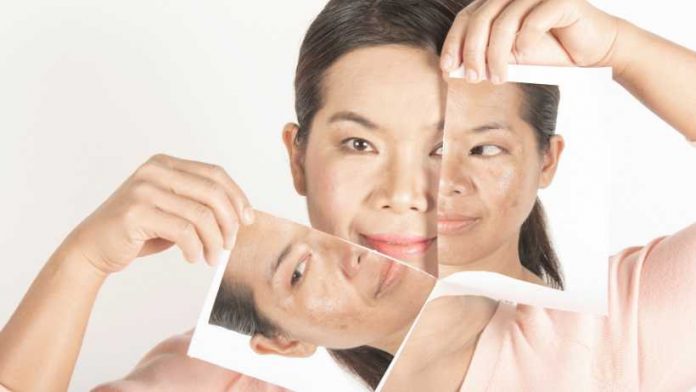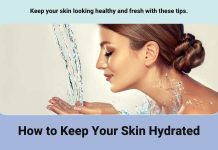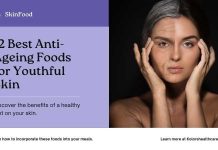Did a recent beach holiday leave brownish or red circular spots on your face and skin? These blemishes are referred to as freckles, which are caused by several hours of sun exposure. Freckles commonly appear on all types of skin of kids and grownups when they stay in the sun for a long time and get exposed to UV rays. Though they are harmless to your skin health, freckles appear when your melanin pigment production is high. It also reminds us that your skin’s tolerance to the sun’s radiation is shallow.
While some people embrace the appearance of freckles, as it complements their fair skin and hair colour, some prefer to hide them. If you wish to have a spotless complexion, we will guide you by covering everything related to freckles. Read on to learn more about the causes, types, OTC products, prevention, skincare routine, and professional treatments for freckles.
What Are Freckles?
Freckles refer to the beige or brown coloured spots in circular shape lying flat on the skin caused by extensive hours of UV rays exposure. They usually fade off during winter and are primarily found in red-headed people with low-pigmented skin[1]. While most often, the freckles don’t pose any severe health issues, developing irregularly shaped freckles might increase the risk of developing skin cancer[2]. These dark-coloured spots develop on your face, chest, back, shoulders, and parts exposed to sun rays.
Causes of freckles
Several factors contribute to the appearance of freckles on the face and skin. They are:
1. Exposure to UV Rays
Getting your skin exposed to several hours of sun exposure regularly is one of the key reasons behind the development of freckles on your face and skin. Too much exposure to the sun can cause the melanocyte cell to increase melanin production [3]. If you are under the sun for several hours without sunscreen, the UV rays absorbed by the skin cells trigger the melanocytes to spike up their melanin production levels. Your freckles will appear lighter or darker based on the level of UV exposure.
2. Genetics Role
You might develop freckles due to hereditary influence. Your body produces two melanin types, such as pheomelanin and eumelanin pigments. The freckle-inducing gene MC1R is the crucial factor that decides the type of melanin pigment your body will produce. The eumelanin pigment shields the skin against the effects of UV rays and is commonly found among people having dark eyes, skin, and hair. The pheomelanin pigment is produced by people having light eyes, skin, and hair[4].
3. Fairer Skin
The melanosomes or melanin granules produced by your melanocytes have a significant role in determining your skin colour. These melanosomes can alter the tone of your external skin cells called keratinocytes. Even though freckles will appear on almost all skin types, fair skin is much more common among people. The 1st and 2nd Fitzpatrick skin types are more prone to freckles than the other skin types[5].
Types of Freckles
Freckles are usually around 1 or 2 mm in size and fade off during cool winter months. There are two types of blemishes[6], such as:
1. Solar Lentigines
These freckles are also called sun spots, which are permanent and have a darker shade. Unlike ephelides, lentigines[7] are thicker and highly prevalent among elderly and mid-aged people. These freckles require dermatologist advice for treatment.
2. Ephelides
This type of freckle might occur owing to genetic factors and sun exposure. It will fade away and get lighter as soon as winter comes in. Ephelides are flat in appearance and have well-defined borders. These freckles are very common among kids.
Professional Treatments for Freckles
1. Chemical peel
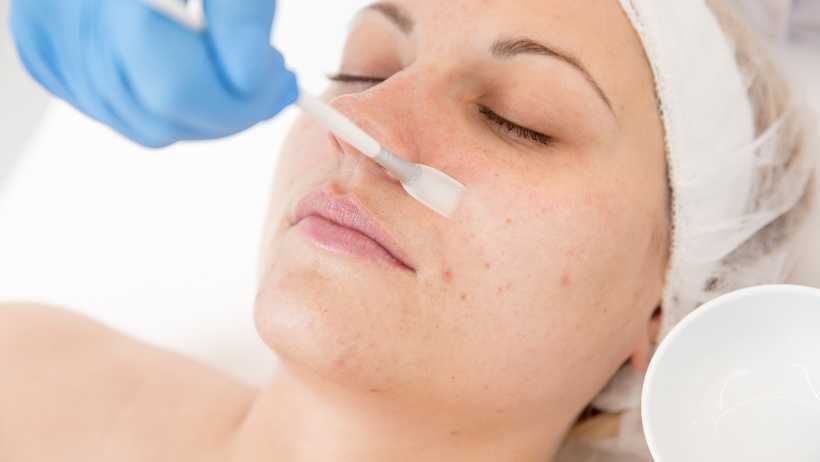
Chemical peel treatment help eliminate freckles on sun-exposed skin through controlled exfoliation. Your dermatologist might suggest an advanced aesthetic procedure utilizing chemical peels of mid-depth with Trichloroacetic Acid or glycolic peel. These peels can penetrate the skin layers for effective freckle removal. After applying the chemical peel, your freckled skin layers will peel off to reveal flawless baby skin free from pigmentation and discolouration.
You will have to use sunblock products with topical medication. In addition, you will have to stay away from direct sunlight for a few weeks after treatment. The America Society for Dermatologic Surgery states that such chemical peels may need about two weeks to heal[8].
2. Cryotherapy
This procedure uses liquid nitrogen to freeze the melanin-filled spots to remove freckles from the skin. The liquid nitrogen acts on the pigmented area by creating a blister to induce controlled skin damage and eliminate the accumulated melanin. It is a safe treatment option that doesn’t need anesthesia or recovery time. Plus, it doesn’t scar your skin.
3. Laser therapy
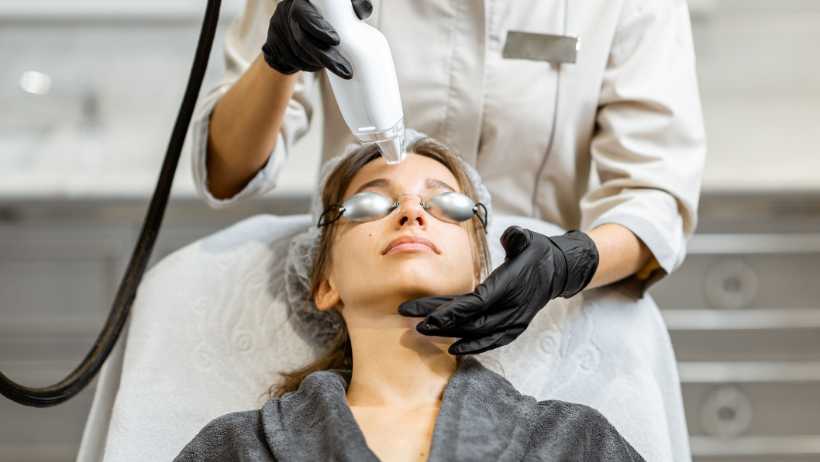
It is one of the most commonly used treatment methods for freckle removal. It is performed by using intense laser light focusing only on the targeted area. Several types of lasers are used for this procedure. A recent study showed that a Q-Switched 1064 nm Laser effectively treats freckles. The study results that this laser treatment had a 100% effective rate of removing the freckles[9].
4. Intense Pulse Light therapy
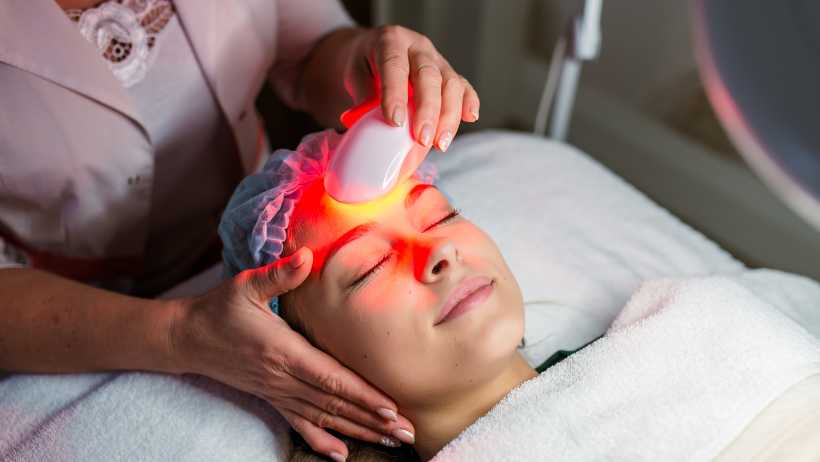
IPL or Intense Pulse Light therapy performed with polychromatic light of high intensity and having different wavelengths is also an effective freckles treatment option[10]. It targets the sun-exposed area with high melanin content to remove freckles quickly.
5. Microdermabrasion
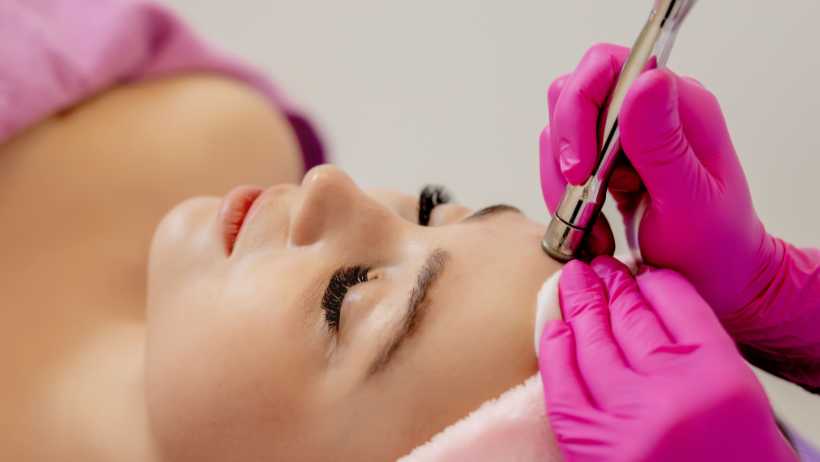
This treatment works on the outer skin layer by using a stream of tiny abrasive particles to sand the affected area gently to remove the dead skin. This progressive treatment erases freckles right from the first session and can be used on all skin types[11]. As it removes the epidermis layer to remove the melanin pigment, it is helpful for solar lentigines and ephelides.
Home Remedies for Freckles
If you want to try home remedies to lighten freckles, try any of the following with effective ingredients[12].
1. Honey and Apple Cider Vinegar

Apple Cider Vinegar has malic acid that helps in skin exfoliation and removes pigmented skin cells. Mix a tablespoon of ACV with a teaspoon of honey and apply evenly on the freckled skin. After 15 minutes, wash using warm water. Repeat every day until the freckles fade.
2. Lemon and Turmeric

Turmeric contains curcumin, which is effective for inhibiting melanogenesis and lightening freckles[13]. Lemon loaded with vitamin C has anti-pigmentary and photo-protective abilities[14]. Make a paste of lemon juice and turmeric powder and apply it to the affected skin. Rinse after the mixture gets dry. Repeat once a week.
3. Curd, Honey, and Lemon

The lactic acid[15] in curd inhibits the activity of tyrosinase to cut down melanin production and hyperpigmentation. Honey is rich in flavonoids and phenolic compounds, which help control tyrosinase activity[16]. Make a thick paste of a tablespoon of curd, a teaspoon of honey, and half a teaspoon of lime juice. Apply on skin with freckles and rinse after 20 minutes.
4. Aloe Vera Gel and Lemon
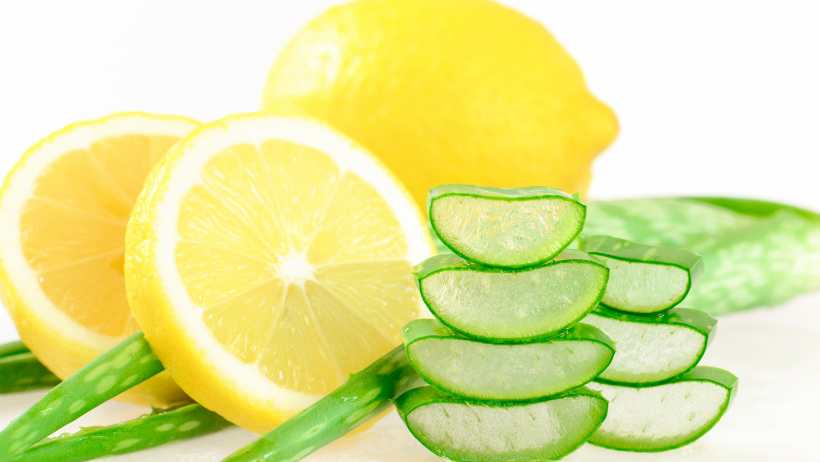
The gel of the aloe vera plant increases metallothionein production in your skin to protect against UV damage[17]. It also prevents tyrosinase activity[18] and lowers melanin production to keep freckles at bay. Add a few drops of lemon to aloe vera gel and massage on freckled skin for a few minutes. Leave overnight and wash off in the morning.
Over-the-Counter Products for Freckles
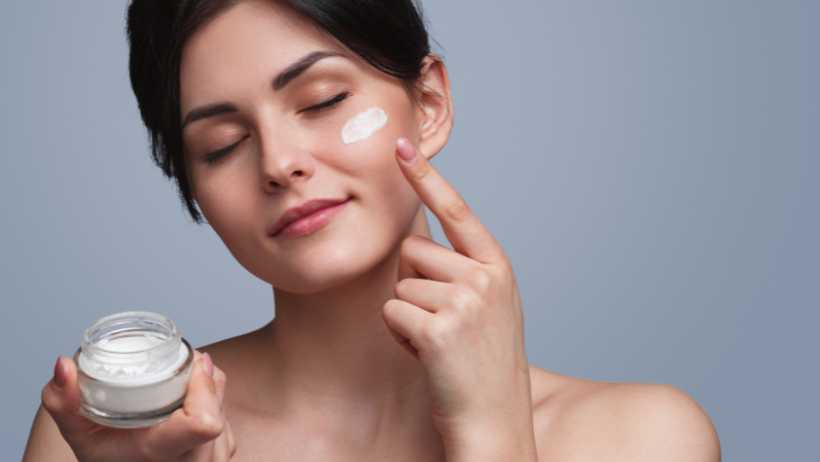
1. Hydroquinone Creams
Several OTC products, like skin-lightening creams, have hydroquinone with up to 2% concentration. It is a depigmentation agent that lowers melanin production and lightens the dark look of freckles. However, it has side effects like discolouration, inflammation, and dryness.
2. Creams with Combined Ingredients
Topical Creams with a combination of kojic acid, hydroquinone, and alpha arbutin are considered adequate to lighten freckles on the skin. However, it might take a couple of months to show actual results.
3. Retinoids
OTC products that contain retinoids, a type of vitamin A, are a class of chemical compounds. This effective ingredient will lighten freckles by promoting cell turnover. It also curbs melanin production and removes pigmented skin. Choose products with low to medium strengths retinoids based on your skin requirement.
4. Spot Peels with TCA
Spot peels or topical creams with TCA, phenol, and trichloroacetic acid are an excellent choice to lighten freckles. A study showed that this formulation helped people with hyperpigmentation and freckles[19].
Prevention of Freckles
- Never skip sunscreen, even in a hurry. Your sunscreen must have SPF 30 or more.
- If you sweat a lot, choose mineral-based sunscreen with a waterproof formula.
- Don’t forget to reapply sunscreen once in two hours when you are outside during the day.
- Do not step out during the peak sunny hours to avoid UV exposure.
- Always choose sun-protecting hats and clothes like long-sleeved shirts and full trousers to cover your skin completely.
Why Should You Consult a Dermatologist at Kolors Healthcare?
Kolors Healthcare is a reputed skin treatment clinic with a team of expert dermatologists performing accurate analysis of your skin condition. They hold a thorough assessment to determine your current skin health before suggesting the right freckle treatment option and customized solutions. Their treatments are thoughtfully developed to brighten skin tone, enhance texture, improve hydration, and lower pigmentation. Stay assured of flaunting flawless skin free from freckles and pigmentation, even during hot summers, with Kolors Healthcare.
Skincare Routine for Managing Freckles
If your skin is prone to develop freckles, then follow these easy tips to manage it effectively.
- Clean your face regularly using a mild face wash twice daily to keep it free from oil and dirt.
- Use a gentle scrub twice weekly for healthy skin free from clogged pores, dead cells, and impurities.
- Use a mild toner that cleanses and tightens the skin pores while balancing your skin’s pH level.
- Hydrate your skin with a homemade face mask with yoghurt, besan, and turmeric to make it look brighter and nourished.
- Moisturize regularly to prevent photodamage induced by UV rays. A well-hydrated skin looks plump, radiant and produces less melanin pigment.
References
- Institute of Genomics and Integrative Biology, Council for Scientific and Industrial Research, New Delhi, India – https://pubmed.ncbi.nlm.nih.gov/29972222/
- Ochsner Cancer Institute, Department of Surgery, Ochsner Clinic Foundation, New Orleans, LA – https://www.ncbi.nlm.nih.gov/pmc/articles/PMC3096196/
- Laboratory of Cell Biology, National Cancer Institute, National Institutes of Health, Bethesda, MD – https://www.ncbi.nlm.nih.gov/pmc/articles/PMC2671032/
- Departamento de Dermatología y Programa Genética Humana, Facultad de Medicina, Universidad de Chile. – https://pubmed.ncbi.nlm.nih.gov/12360796/
- Medical News Today – https://www.medicalnewstoday.com/articles/320639#types-1-6
- Department of Biochemistry and Molecular Biology, Biomedical Center, Faculty of Medicine, University of Iceland, Reykjavik, Iceland – https://pubmed.ncbi.nlm.nih.gov/24517859/
- DermoLaser Office, Piazza Cittadella, 26, 37122 Verona, Italy – https://www.ncbi.nlm.nih.gov/pmc/articles/PMC6132099/
- American Society for Dermatologic Surgery (ASDS) – https://www.asds.net/skin-experts/skin-treatments/chemical-peels
- Department of Laser Center, Hangzhou Third People’s Hospital, Hangzhou 310009, Zhejiang, China – https://www.ncbi.nlm.nih.gov/pmc/articles/PMC10335754/
- Department of Dermatology, Southwest Hospital, Chongqing, China – https://www.e3s-conferences.org/articles/e3sconf/pdf/2020/05/e3sconf_iaecst2020_01003.pdf
- Faculty of Medicine, Tanta University, Tanta, Egypt – https://pubmed.ncbi.nlm.nih.gov/32128707/
- Dr. Hollinger is with the Department of Dermatology, University of Mississippi Medical Center in Jackson, Mississippi – https://www.ncbi.nlm.nih.gov/pmc/articles/PMC5843359/
- Department of Dermatology, 2nd Affiliated Hospital of Dalian Medical University, Liaoning 116027, PR China – https://pubmed.ncbi.nlm.nih.gov/21584871/
- Drs. Al-Niaimi and Chiang are consultant dermatologists. Dr. Al-Niaimi is with the skin clinic at London Harley Street, London, United Kingdom – https://www.ncbi.nlm.nih.gov/pmc/articles/PMC5605218/
- US Food and Drug Administration [retired], Annandale, VA, USA – https://www.ncbi.nlm.nih.gov/pmc/articles/PMC3047947/
- Department of Life and Environmental Sciences, University of Cagliari, 09042 Monserrato, CA Italy – https://www.ncbi.nlm.nih.gov/pmc/articles/PMC6049736/
- Department of Dermatology, Venereology and Leprosy, Grant Medical College and Sir J J Group of Hospitals, Mumbai, Maharashtra, India – https://www.ncbi.nlm.nih.gov/pmc/articles/PMC2763764/
- Department of Horticultural and Crop Environment, National Institute of Horticultural and Herbal Science, RDA, Wanju, Republic of Korea – https://www.ncbi.nlm.nih.gov/pmc/articles/PMC6010052/
- Department of Dermatology, Bangalore Medical College and Research Institute, Bangalore, Karnataka, India – https://www.ncbi.nlm.nih.gov/pmc/articles/PMC3560166/

